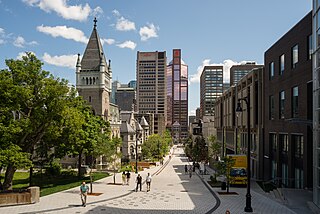
A World Heritage Site is a landmark or area with legal protection by an international convention administered by the United Nations Educational, Scientific and Cultural Organization (UNESCO). World Heritage Sites are designated by UNESCO for having cultural, historical, scientific or other form of significance. The sites are judged to contain "cultural and natural heritage around the world considered to be of outstanding value to humanity". To be selected, a World Heritage Site must be a somehow unique landmark which is geographically and historically identifiable and has special cultural or physical significance. For example, World Heritage Sites might be ancient ruins or historical structures, buildings, cities, deserts, forests, islands, lakes, monuments, mountains, or wilderness areas. A World Heritage Site may signify a remarkable accomplishment of humanity, and serve as evidence of our intellectual history on the planet, or it might be a place of great natural beauty. As of June 2020, a total of 1,121 World Heritage Sites exist across 167 countries. With 55 selected areas, China and Italy are the countries with the most sites on the list.
The International Council on Monuments and Sites is a professional association that works for the conservation and protection of cultural heritage places around the world. Now headquartered in Charenton-le-Pont, ICOMOS was founded in 1965 in Warsaw as a result of the Venice Charter of 1964, and offers advice to UNESCO on World Heritage Sites.

Canada has a large domestic and foreign tourism industry. The second largest country in the world, Canada's incredible geographical variety is a significant tourist attractor. Much of the country's tourism is centred in the following (busiest) regions: Toronto, Montreal, Vancouver/Whistler, Niagara Falls, Vancouver Island, Calgary/Canadian Rockies, British Columbia's Okanagan Valley, and the national capital region Ottawa. The large cities are known for their culture, diversity, as well as the many national parks and historic sites.

The economy of Quebec is diversified and post-industrial with an average potential for growth. Manufacturing and service sectors dominate the economy. If Quebec were a country, its economy would be ranked the 33th largest in the world just behind Norway. Quebec is also ranked the 21st largest in the Organisation for Economic Co-operation and Development. The economy of Quebec represents 19.65% of the total GDP of Canada.
The Canadian Heritage Rivers System is a joint program administered by the federal, provincial and territorial governments to conserve and protect the best examples of Canada's river heritage, to give them national recognition, and to encourage the public to enjoy and appreciate them. It is a cooperative program of the governments of Canada, nine provinces, and the three territories. A 14-member national board, created under the Parks Canada Agency Act, administers the program and approves the designation of specific rivers.

The architecture of Montreal, Quebec, Canada is characterized by the juxtaposition of the old and the new and a wide variety of architectural styles, the legacy of two successive colonizations by the French, the British, and the close presence of modern architecture to the south. Much like Quebec City, the city of Montreal had fortifications, but they were destroyed between 1804 and 1817.

Koutammakou, the Land of the Batammariba is a cultural landscape designated in 2004 as a UNESCO World Heritage Site in northern Togo. The area features traditional mud tower-houses which remain the preferred style of living. The traditional mud houses are known as a national symbol of Togo. Many of the mud houses have two floors and some of them have a flat roof.

Charles Baillairgé was an architect, land surveyor, civil engineer, and an author.

The Maison Saint-Gabriel Museum is located in Montreal, Quebec and is dedicated to preserving the history, heritage and artifacts of the settlers of New France in the mid 17th century. The museum consists of a small farm, which has been administered for more than 300 years by the Sisters of the Congregation of Notre Dame of Montreal, founded by Marguerite Bourgeoys in Montreal in 1658.
The Quebec Cultural Heritage Directory is an online cultural heritage knowledge dissemination tool for the province of Quebec. The directory is maintained by the province's Ministry of Culture and Communications.
Heritage conservation in Canada deals with actions or processes that are aimed at safeguarding the character-defining elements of a cultural resource so as to retain its heritage value and extend its physical life. Historic objects in Canada may be granted special designation by any of the three levels of government: the federal government, the provincial governments, or a municipal government. The Heritage Canada Foundation acts as Canada's lead advocacy organization for heritage buildings and landscapes.
The Canadian Commission for UNESCO (CCUNESCO), administered by the Canada Council for the Arts, is Canada's national commission for UNESCO, actively advancing the organization's mandate to contribute to peace based on the intellectual and moral solidarity of humankind by promoting cooperation among nations.

The Church of the Gesù is a Roman Catholic Church in downtown Montreal, Quebec, Canada. It is located at 1202 Bleury Street in the borough of Ville-Marie. It was adjacent to the Collège Sainte-Marie.
Barbara A. Humphreys is a Canadian architect and author, specializing in public service, historic preservation, and housing.

Chantal Ringuet is a Canadian scholar, award-winning author and translator.
Gavin Affleck, FRAIC, is a Canadian architect known for the design of cultural institutions and public spaces. He is the founding partner of the Montreal firm Affleck de la Riva alongside Richard de la Riva, and is the son of architect and Arcop founder Ray Affleck. Affleck is an elected Fellow of the Royal Architectural Institute of Canada (FRAIC), a member of the Quebec Order of Architects (OAQ) and the Ontario Association of Architects (OOA), as well as a LEED-certified architect.

Peter Daniel Alexander Jacobs is a Canadian landscape architect specializing in the conservation and development of rural and northern landscapes and in urban landscape design. He is Emeritus professor of the School of Planning and Landscape Architecture of the Universite de Montreal, Emeritus Chair of the Commission on Environmental Planning of the International Union for the conservation of nature (IUCN), Past President of the Canadian Society of Landscape Architects (CSLA), Chair of the Kativik Environmental Quality Commission and a Member of the Royal Canadian Academy of the Arts.

Saint Jerome Hears the Trumpet of the Last Judgment is a 1779 painting by the French artist Jacques-Louis David.











